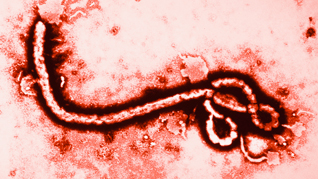The Centers for Disease Control and Prevention (CDC) confirmed Tuesday that the first case of Ebola has appeared in the United States. Here’s what physicians need to know.
The virus is spread through contact with bodily fluids of a person who is sick with or has died from Ebola, and the chances of a widespread outbreak in the United States are unlikely, said CDC Director Tom Frieden, MD. And the CDC issued screen guidelines.
“I have no doubt that we will control this case of Ebola so that it does not spread widely in this country,” Dr. Frieden said. “It is certainly possible that someone who had contact with this individual could develop Ebola in the coming weeks … but there is no doubt in my mind that we will stop it here.”
The individual, who is not a health care worker, traveled from Liberia on Sept. 19 and arrived in the United States on Sept. 20, according to the CDC. The patient began developing symptoms of the virus on Sept. 24 and initially sought care on Sept. 26, but was not admitted to the hospital until Sept. 28, when he was placed into isolation at Texas Health Presbyterian Hospital in Dallas.
Initial Ebola symptoms are often non-specific. The CDC is encouraging physicians to take patient travel histories. The CDC website for health care providers offers more information on diagnosis and testing, protection and how to safely manage patients with the virus.
The patient will remain at Texas Health Presbyterian. Edward Goodman, MD, an epidemiologist at the hospital, said the hospital has had an Ebola preparedness plan in place for some time.
“In the week before this patient presented, we had a meeting of stakeholders who might be involved,” Dr. Goodman said. “Because of that, we are well prepared to deal with this crisis.”
“Virtually any hospital in this country that can do isolation, can do isolation for Ebola,” Dr. Frieden said. “We don’t see a need from either a medical or an infection control standpoint to try to move the patient.”
Health workers have begun tracing people who may have had direct or indirect contact with the patient. Meanwhile, patients can get more information about Ebola on the CDC website.
“Ebola is a virus, it’s a virus that’s easy to kill by washing your hands, it’s easy to stop by using gloves and barrier precautions,” Dr. Frieden said. “The issue is not with Ebola that it’s infectious. The issue with Ebola is that the stakes are so high.”




